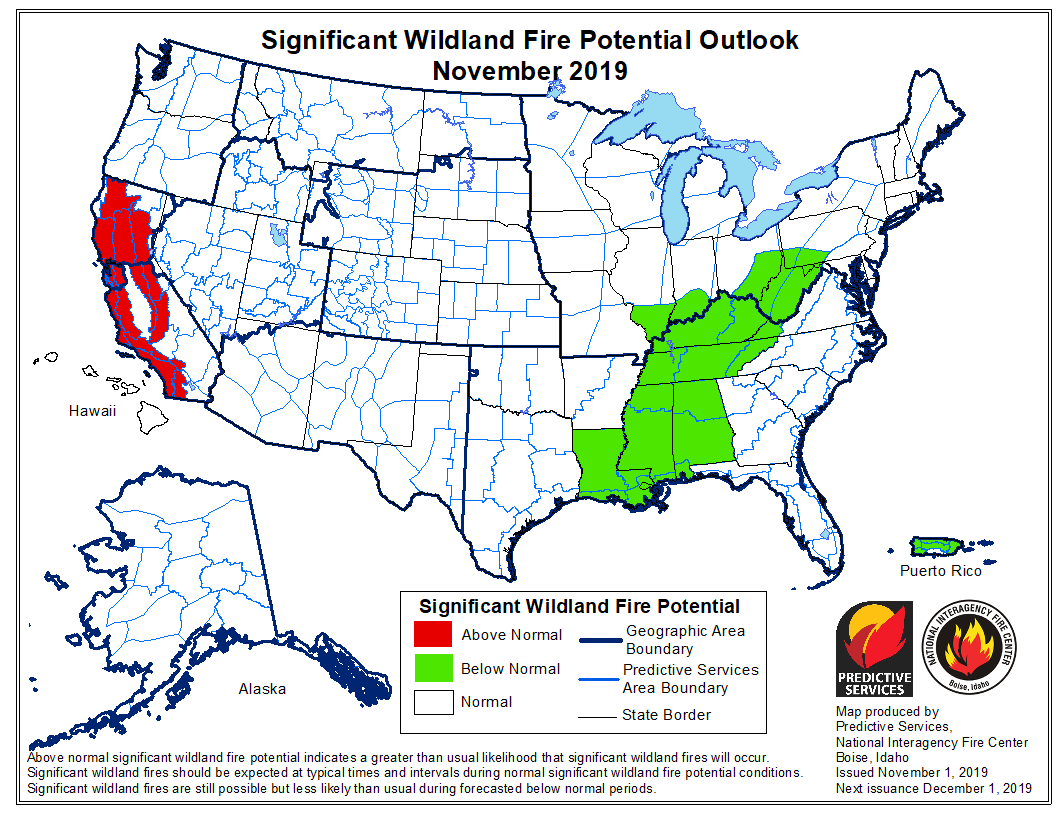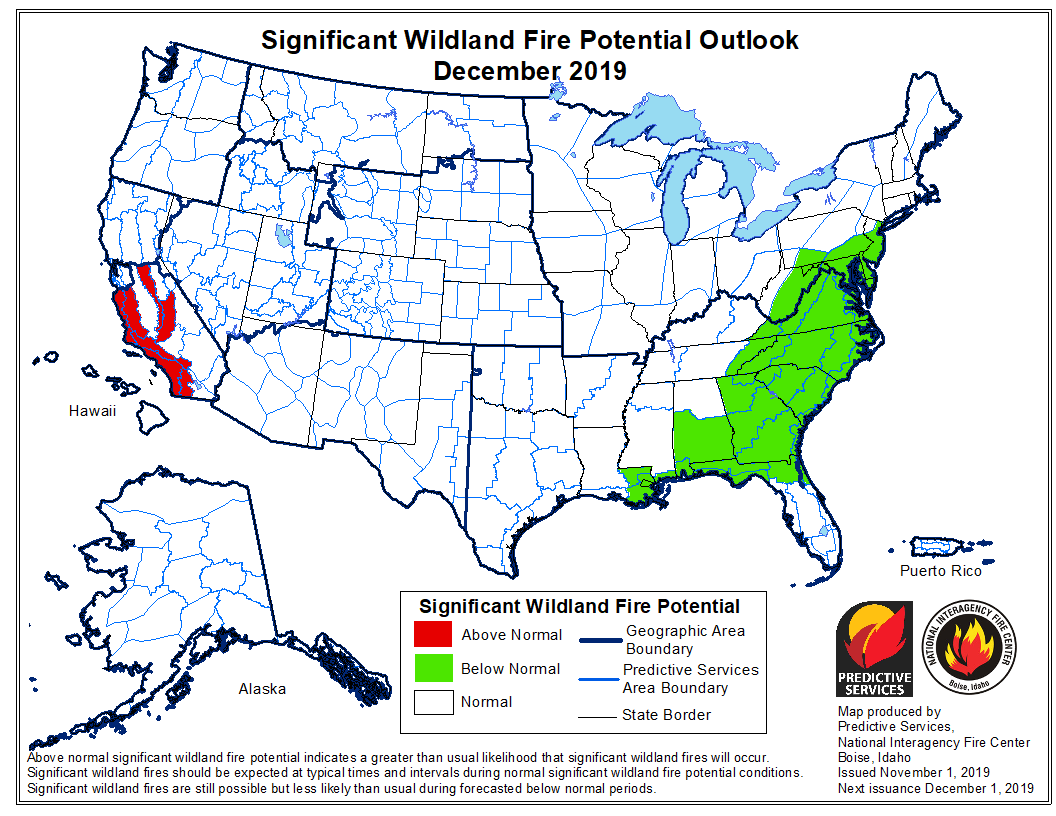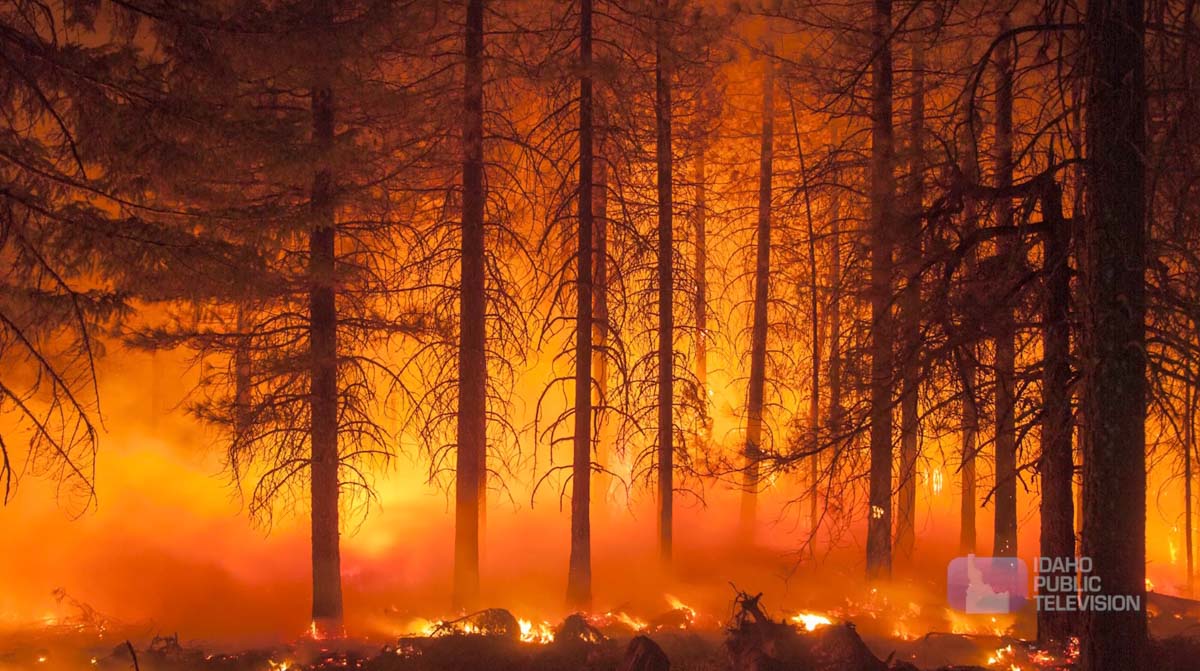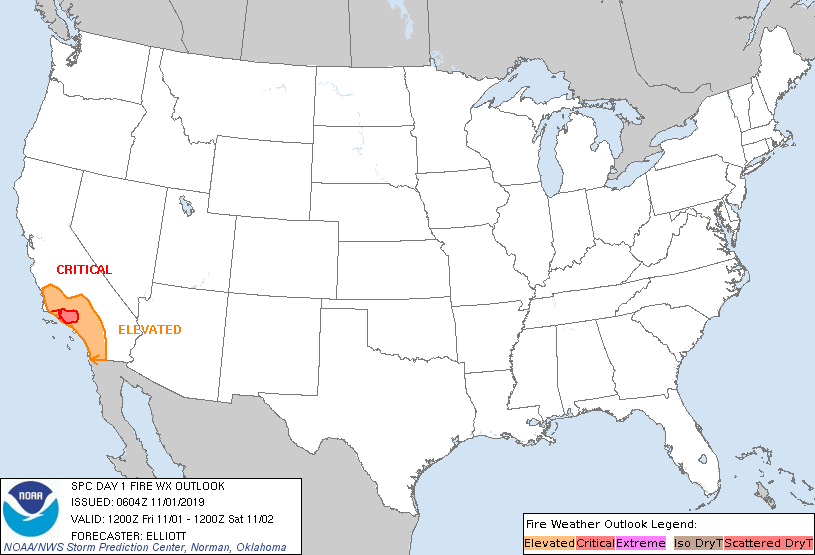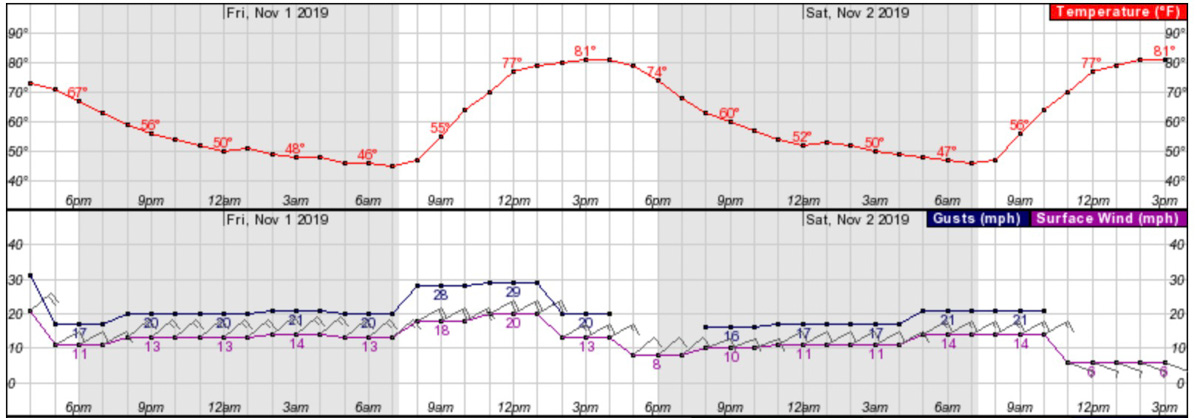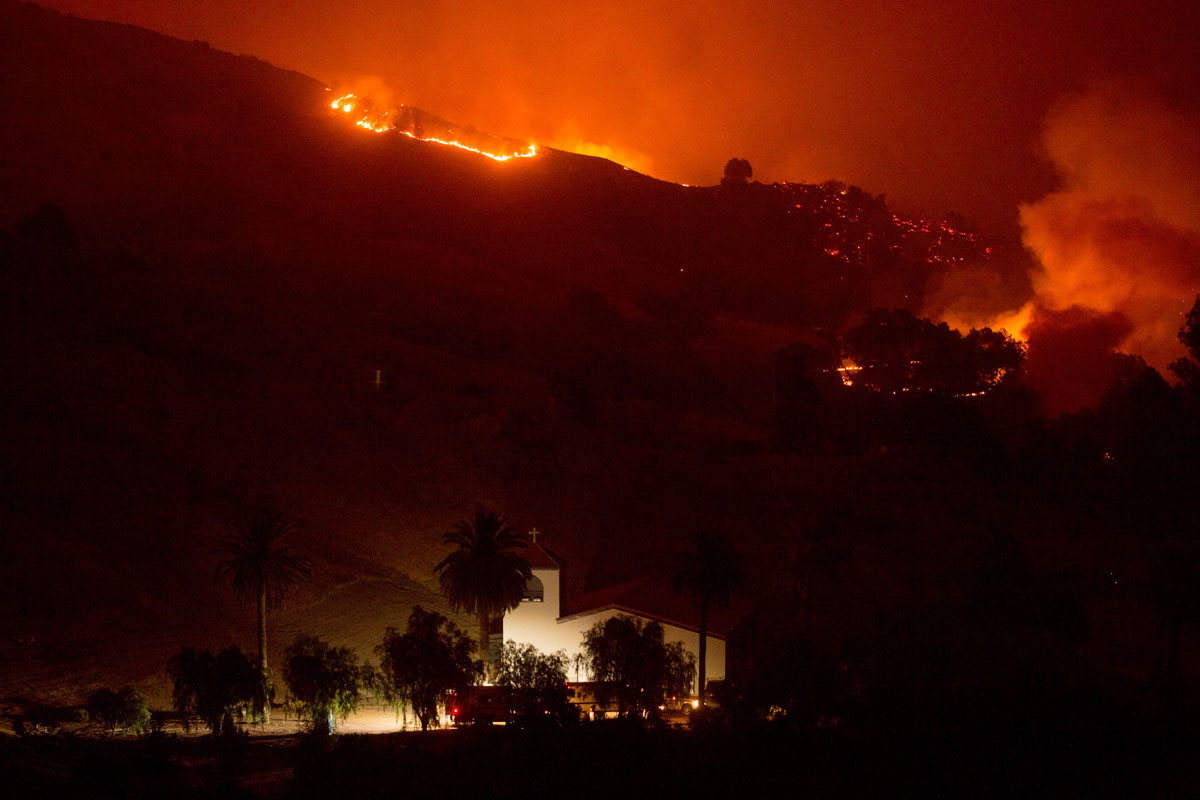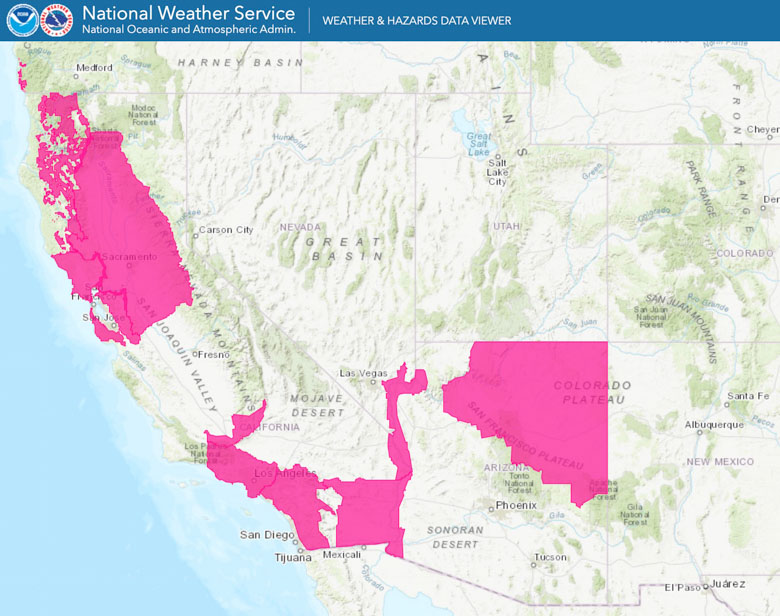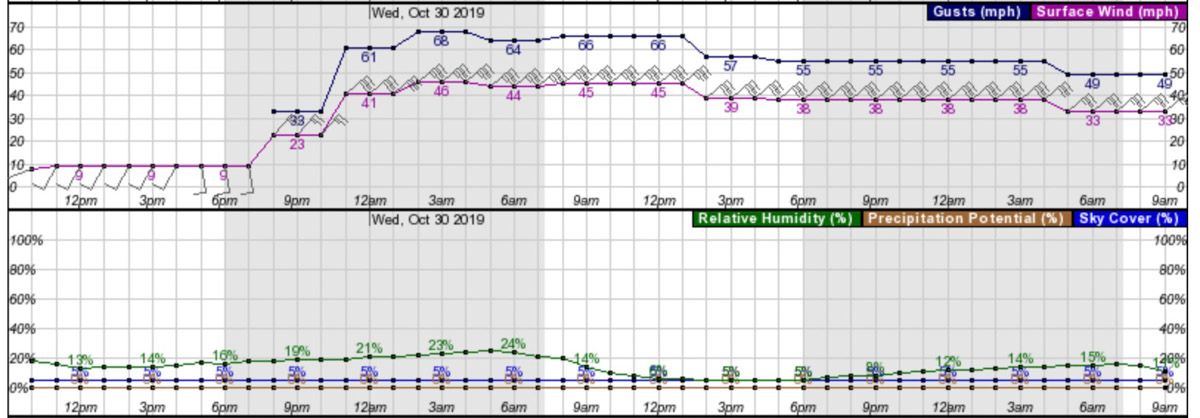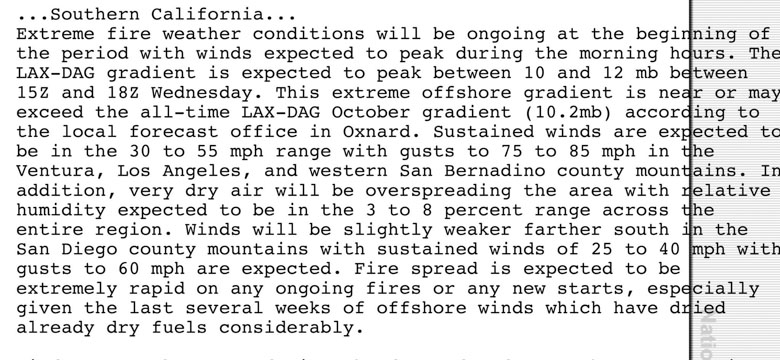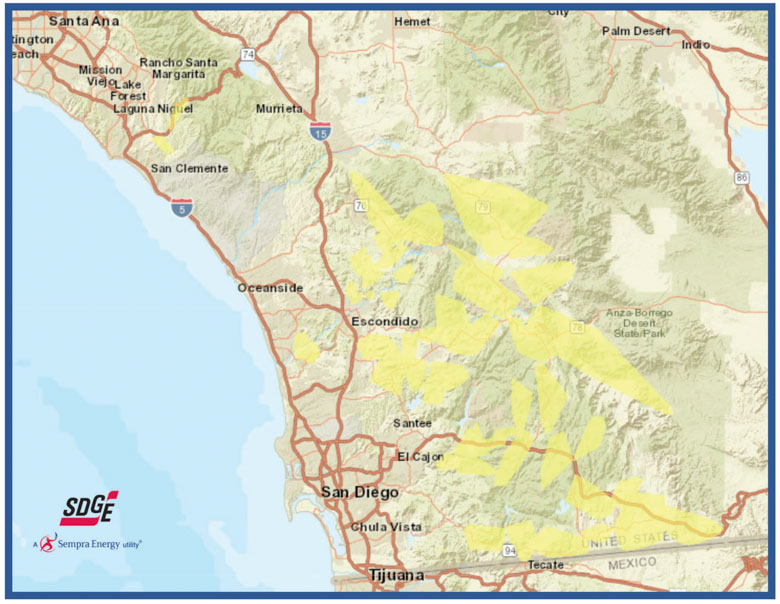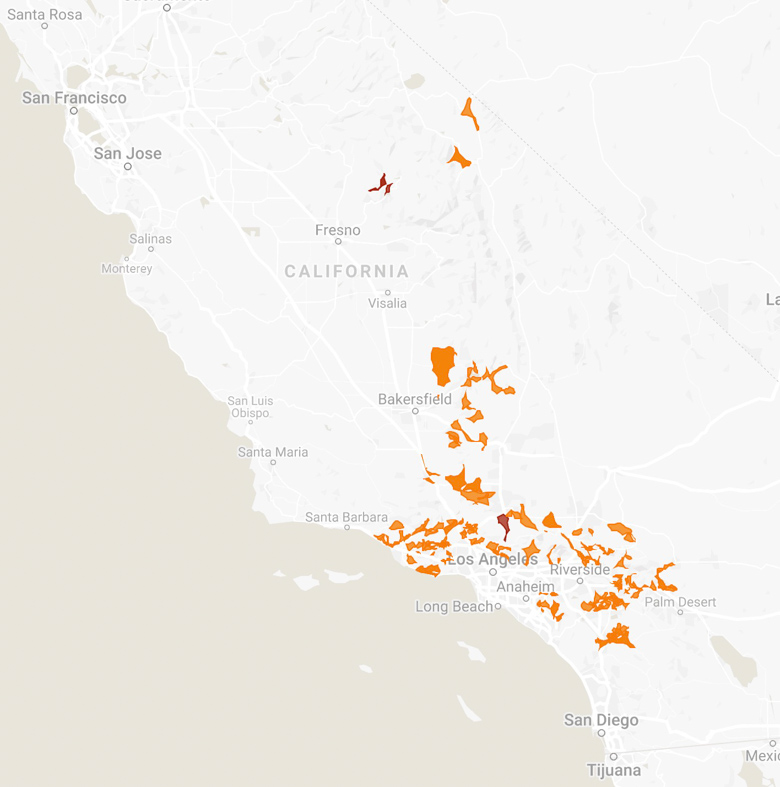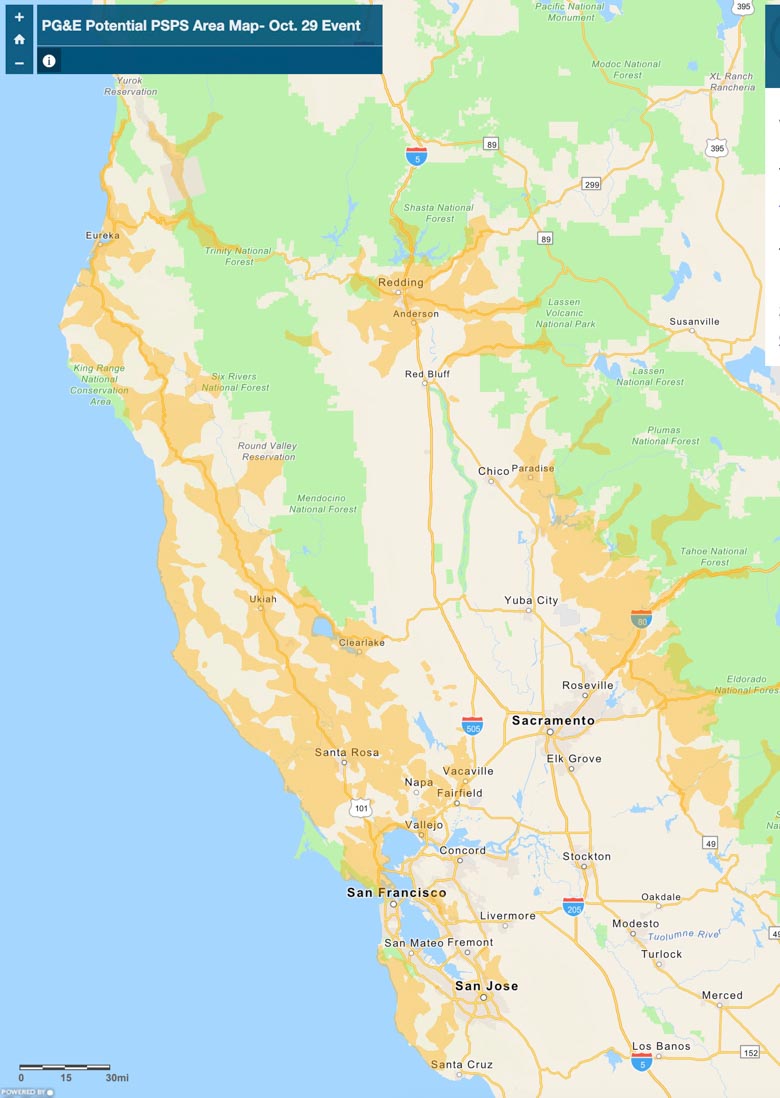The Predictive Services section at the National Interagency Fire Center has issued their Wildland Fire Potential Outlook for November through February. The data represents the cumulative forecasts of the ten Geographic Area Predictive Services Units and the National Predictive Services Unit.
If NIFC’s analysis is correct the only area with above average potential for wildfires during the four-month period is California in November and December. According to the prediction most of the forested or brush-covered lands in the state will have enhanced potential in November. That area will shrink in December to just the southern two-thirds of California.
Below:
- An excerpt from the NIFC narrative report for the next several months;
- More of NIFC’s monthly graphical outlooks;
- NOAA’s three-month temperature and precipitation forecasts;
- Drought Monitor;
- Keetch-Byram Drought Index.
From NIFC:
“Entering the outlook period, most states will remain out of fire season in November. Exceptions to this will continue to be California, Colorado, and possibly Texas where drier than average conditions will continue. Expect periodic increases in fire potential and activity during wind events that not only bring strong winds but also drier air that lowers humidity levels to critical levels. The occurrence of such events should begin to diminish in frequency later in the month as the seasonal transition begins to end. Medium range data suggests that conditions across the Southeast will continue to show improvement as the frequency of moisture events continues to increase.”
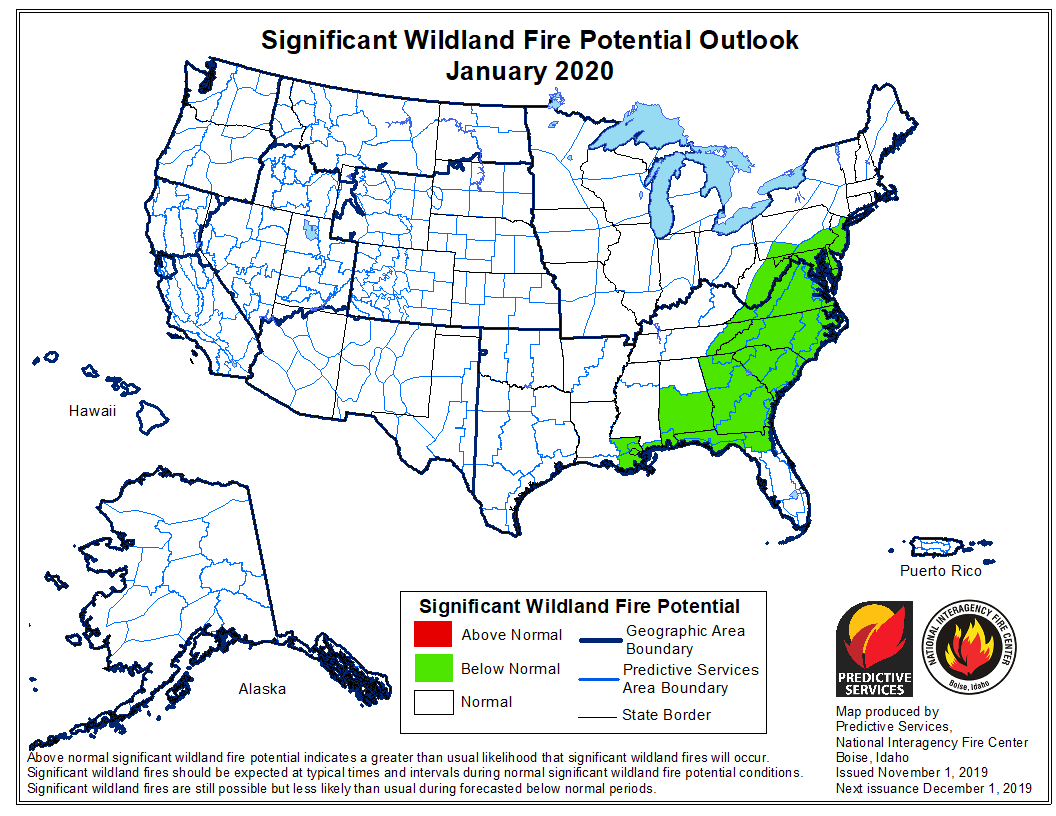
Continue reading “Potential for wildfires in California predicted to be high in November”

